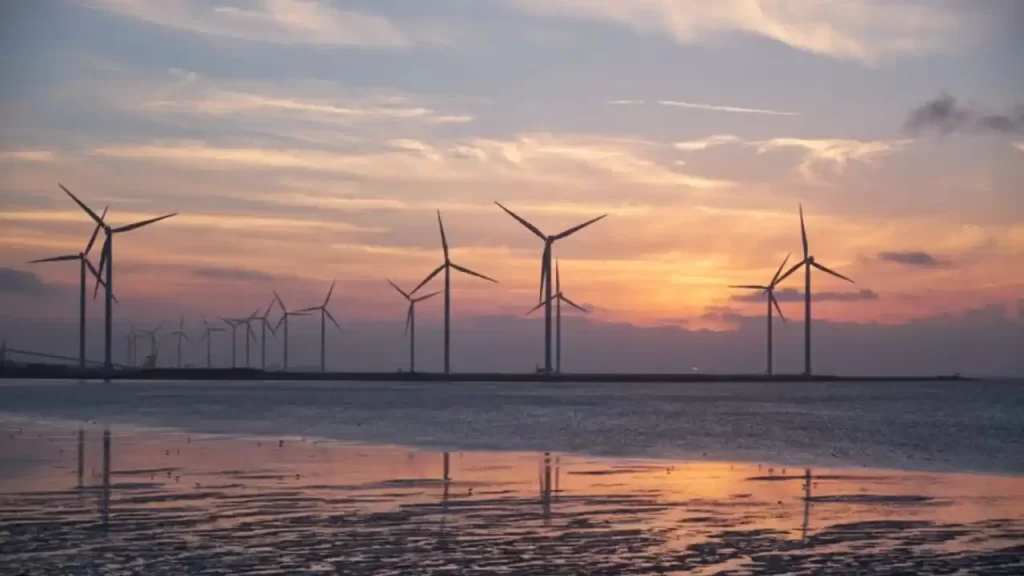Our huge reliance on fossil fuels has caused many troubles for us such as climate change, the energy crisis, high fuel bills, and hostile global relations to name a few. Renewable energy is the only viable alternative to replace fossil fuels. There are many renewable energy sources like solar energy, wind energy, geothermal energy, hydro energy, and biofuels. However, in this article, I will discuss wind energy particularly offshore wind energy, which is an excellent fossil fuel alternative. So, let’s get started.
What is Offshore Wind Energy?
Before going into the details, let’s start from the basics. For those of you who have no idea what offshore wind energy is. Let me briefly define it for you.
The electrical energy generated from one of the mightiest forces in nature i.e., wind with the help of turbines is called wind energy. Wind energy is one of the most reliable renewable energy technologies.
The amount of energy produced depends on the blades’ size and the wind’s speed.
Offshore and onshore wind energy are the two options for wind power generation. Offshore wind farms are installed in bodies of water where high-speed winds are available, whereas onshore wind energy is produced on land.
What is the Ultimate Energy Source for the Most Wind?
The wind is a form of solar energy, which is generally produced through uneven heating of the atmosphere. The uneven heating cause pressure difference.
Due to this pressure difference, the wind tends to move from an area of higher pressure to an area of lower pressure. Higher heating/pressure differences produce winds with higher speeds.
Hence, solar energy is the ultimate energy source for most winds.
The Working Mechanism of an Offshore Wind Energy Turbine
The working of wind turbines is almost identical whether it is an offshore or onshore wind turbine. A typical wind turbine structure consists of turbine blades, a drive shaft, and a generator.
When the wind blows, the aerodynamic force turns the airfoil-shaped blades, which makes the drive shaft spin.
The spinning drive shaft turns an electric generator, which converts kinetic energy into electric energy.
You May Also Read: Ditch Single-Use: Your Ultimate Guide to the Best Reusable Water Balloons
Offshore Wind Energy Pros and Cons
Wind energy has long been used for many purposes such as sailing ships, windmills, flying planes, flying hot balloons, flying kites, and many more.
However, the generation of electricity is a relatively novel notion. Wind turbines first emerged more than a century ago.
Offshore wind energy has both advantages and disadvantages.
Advantages of Offshore Wind Energy
Offshore wind energy offers several advantages including,
- More Power: Offshore winds are stronger and more consistent than land winds. This means fewer wind turbines are needed to produce the same amount of clean energy for your city!
- Land-Friendly: No need for giant windmills taking up space on land. Offshore farms stay out of sight and avoid disrupting farms, homes, or wildlife habitats on land.
- Reliable Energy: Strong, consistent offshore winds mean more reliable energy production. You can count on this clean power source to keep your lights on!
Disadvantages of Offshore Wind Energy
While offshore wind has many benefits, there are also some challenges to consider:
- Costly Setup: Building wind farms in the ocean is trickier than on land. Specialised ships and equipment are needed, making them more expensive to set up.
- Ocean Impact: Construction and operation of the wind farms can disrupt marine life. Underwater noise and habitat changes need to be carefully managed.
- Maintenance Challenges: Fixing a broken windmill on land is easier than one in the middle of the ocean! Maintenance can be expensive and time-consuming due to rough seas and remote locations.
Offshore vs Onshore Wind Energy: Which One is Better?
The wind blows more consistently and has higher speeds over the ocean than it does over land, because of the lack of obstacles.
Therefore, offshore wind energy production has a higher output than onshore wind energy. Moreover, it has less impact on the landscape since they are built in the open ocean.
Placing turbines over the ocean is more convenient as there are very few restrictions. There are no turbine height and size restrictions like in the case of installation on land as large components can easily be transported via ships. Therefore, usually, offshore wind turbines are even taller than the mighty Statue of Liberty.
Furthermore, in the case of offshore wind farms, usually, an artificial island is built to install the wind turbines, thus huge investments are needed.
Moreover, since the offshore wind farms are located away from consumers, therefore there is significant voltage drop-off or transmission losses.
When deciding between offshore and onshore wind energy, many financial, political, and geographical factors have to be considered.
When there is an open and unoccupied land area for wind farms to install, then we can go ahead with onshore wind farms otherwise offshore wind farm is the solution, which is costly in the initial phase but it is cost-effective in the long run and it has higher potential then onshore wind energy.
Offshore Wind Energy: An Excellent Fossil Fuel Alternative
Fossil fuels are responsible for many environmental concerns, therefore the transition to renewable energy is critical. Wind energy is an excellent fossil fuel alternative.
Even though, the current infrastructure is not harnessing the full potential of wind energy. The cumulative capacity of installed wind power worldwide stands at approximately 837 gigawatts in 2021.
Out of which around 780 gigawatts are produced from onshore wind farms, thus offshore wind energy remains an untapped resource.
China is the world’s largest wind energy producer with a capacity of over 237 gigawatts. The majority of this power comes from wind farms on the land. The progress in offshore production in china is slower than in other countries.
Being in an unlimited and uninterrupted supply of offshore wind energy has an enormous potential to fulfill world energy demands. If utilized effectively, wind energy is one of the best fossil fuel alternatives.
Offshore Wind Energy vs Solar Energy: Which Is The Better Energy Source?
Let’s talk about two of the most common renewable energy sources, namely wind energy, and solar energy. What do you think about which one is better?
Well, it depends on certain things, including the area’s location, distance to the sea, presence of the energy source i.e., wind or sunlight, the feasibility of installing the power generation system, and many more.
Both of these energy sources are renewable and sustainable. For some areas, wind energy can be a better option while for others solar energy is a clear choice. Before going with one type of energy, it is better to carry out a feasibility study.
First Ever Man-Made “Energy Island”: Denmark Strikes Deal Artificial Wind Energy
Denmark is the first country to have produced modern wind energy in 1891. The 22.8-meter wind turbine began its operations in 1897.
Moreover, Denmark has the highest percentage of wind energy in its total energy mix (Penetration). Around 48% of its renewable energy comes from wind energy.
To further strengthen its wind energy capacity, Denmark recently struck a deal for artificial wind energy worth $34 billion. This project is the largest construction project in Danish history. The artificial energy Island will produce electricity for 3 million households in its first phase with a capacity of 3 Gigawatts, in the future, the capacity will be scaled up to 10 gigawatts.
Moreover, in the future green hydrogen will also be produced from seawater in the newly constructed artificial energy island.
Along with Denmark, Germany and the United States have also shown commitment to investing in the wind renewable energy sector. Other countries should also follow the lead.
Conclusion
Offshore wind energy is therefore an untapped renewable energy source, which has the potential to replace the dependency on fossil fuels.
However, the complete transition toward renewable energy needs the attention of the governments. Lowering fossil fuel subsidies and directing investment and incentives towards the wind energy sector can be a starting point.
You May Also Explore Some of Our Buying Guides:


3 thoughts on “Offshore Wind Energy: The Latest Trend in Wind Energy Generation”
Comments are closed.